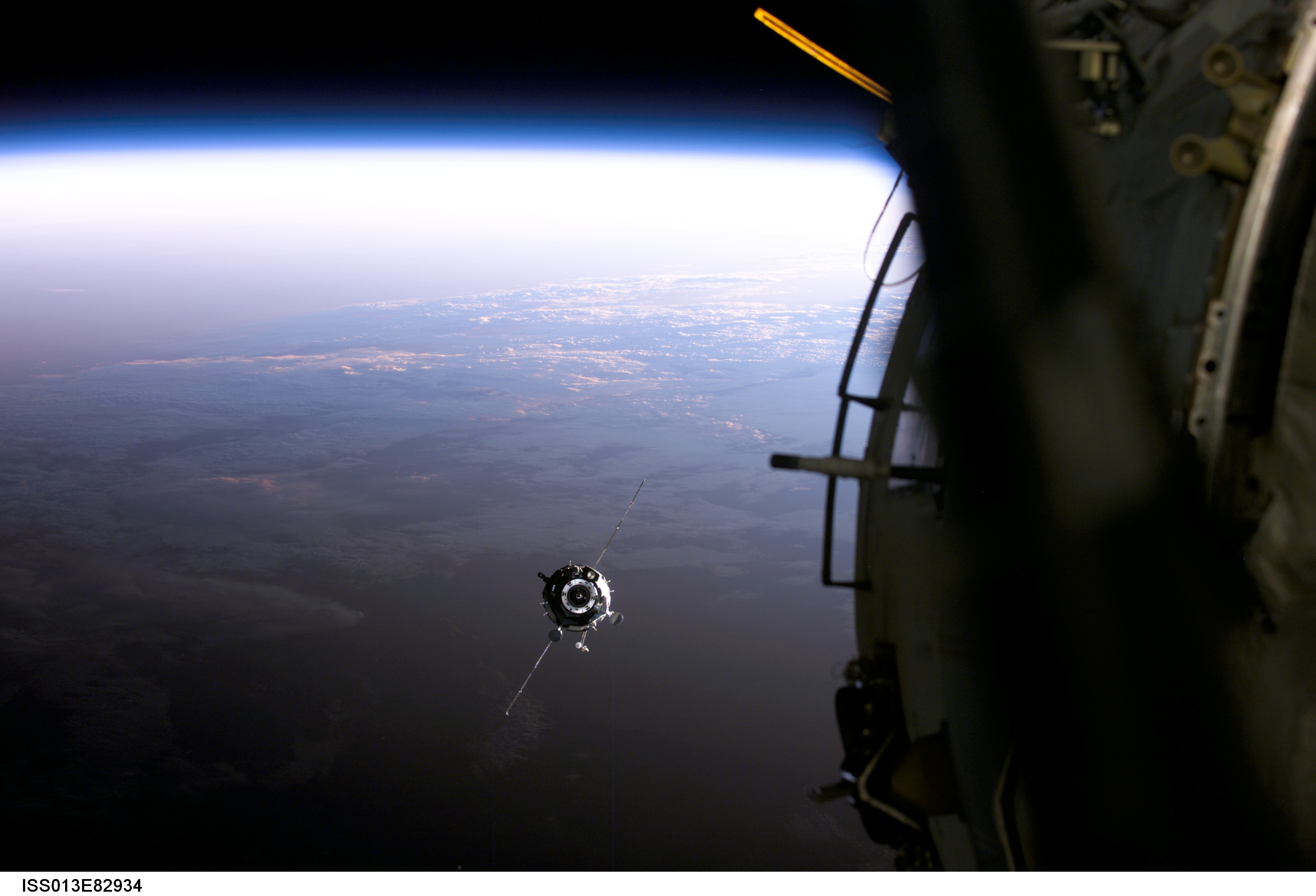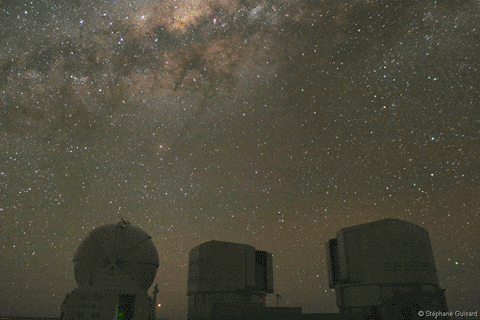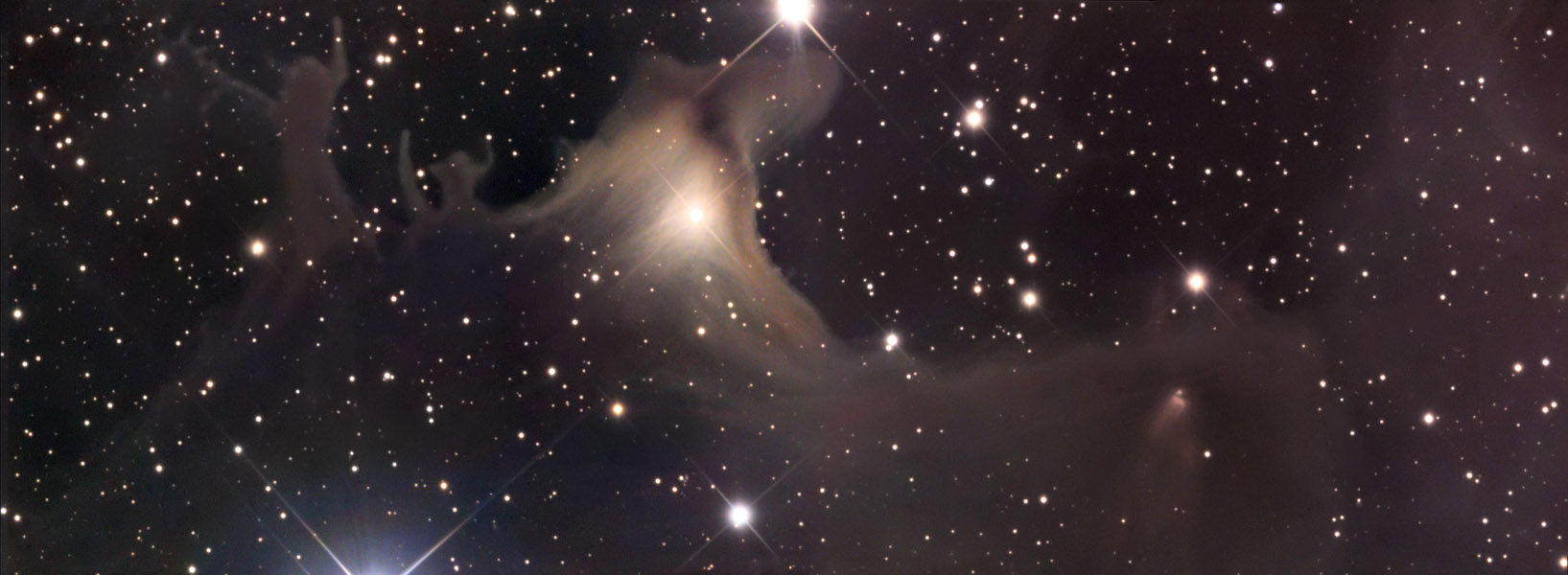Thursday, May 10, 2007
Monday, May 07, 2007
apod 4.6 the sombero galaxy

Friday, April 13, 2007
Apod 4.3 Jupiter moon movie

South is toward the top in this frame from a stunning movie featuring Jupiter and moons recorded last Thursday from the Central Coast of New South Wales, Australia. Jupiter's new junior red spot is just above the broad white band in the planet's southern (upper) hemisphere. In later frames, as planet and moons rotate (right to left), red spot junior moves behind Jupiter's left edge while the Great red spot comes into view from the right. Also finally coming into view at the right, is Jupiter's volcanic moon, Io.
Wednesday, April 11, 2007
Origin of the spiral structure
The pioneer of studies of the rotation of the Galaxy and the formation of the spiral arms was Bertil Lindblad in 1925. He realised that the idea of stars arranged permanently in a spiral shape was untenable due to the "winding dilemma". Since the speed of rotation of the galactic disk varies with distance from the centre of the galaxy, a radial arm (like a spoke) would quickly become curved as the galaxy rotates. The arm would, after a few galactic rotations, become increasingly curved and wind around the galaxy ever tighter. Or, the stars on the outermost edge of the galaxy would have to move faster than those near the center, as the galaxy rotates. Neither behaviour is observed. According to Bertil Lindblad, with the Density Wave Theory, the arms represent regions of enhanced density (density waves) that rotate more slowly than the galaxy’s stars and gas. As gas enters a density wave, it gets squeezed and makes new stars, some of which are short-lived blue stars that light the arms.
Subsequent work was developed by C. C. Lin and Frank Shu in 1964. They suggested that the spiral arms were manifestations of spiral density waves, attempting to explain the large-scale structure of spirals in terms of a small-amplitude wave propagating with fixed angular velocity, that revolves around the galaxy at a speed different from that of the galaxy's gas and stars. As the compression wave goes through, it triggers star formation on the leading edge of the spiral arms. They assumed that the stars travel in elliptical orbits and that the sizes as well as the orientations of their orbits are slightly-varying from each other, i.e. the ellipses vary in their orientation (one to another) in a smooth way with increasing distance from the galactic center. This is illustrated in the diagram. It is clear that the elliptical orbits come close together in certain areas to give the effect of arms.
Alternative hypotheses that have been proposed involve waves of star formation moving about the galaxy, also called the stochastic self-propagating star formation model or SSPSF model. This model proposes that star formation propagates via the action of shock waves produced by stellar winds and supernovae that compose the interstellar medium. The arms appear brighter because there are more young stars (hence more massive, bright stars). These massive, bright stars also die out quickly, which would leave just the (darker) background stellar distribution behind the waves, hence making the waves visible.
The different hypothesis do not have to be mutually-exclusive, as they may explain different types of spiral arms.
While stars, therefore, do not remain forever in the position that we now see them in, they also do not follow the arms. The arms simply appear to pass through the stars as the stars travel in their orbits.
Recent results suggest that the orientation of the spin axis of spiral galaxies is not a chance result, but instead they are preferentially aligned along the surface of cosmic voids.[2] That is, spiral galaxies tend to be oriented at a high angle of inclination relative to the large-scale structure of the surroundings. They have been described as lining up like "beads on a string," with their axis of rotation following the filaments around the edges of the voids.[3]
Friday, March 23, 2007
Friday, March 09, 2007
Apod-4.1 Eclipsed moon and stars
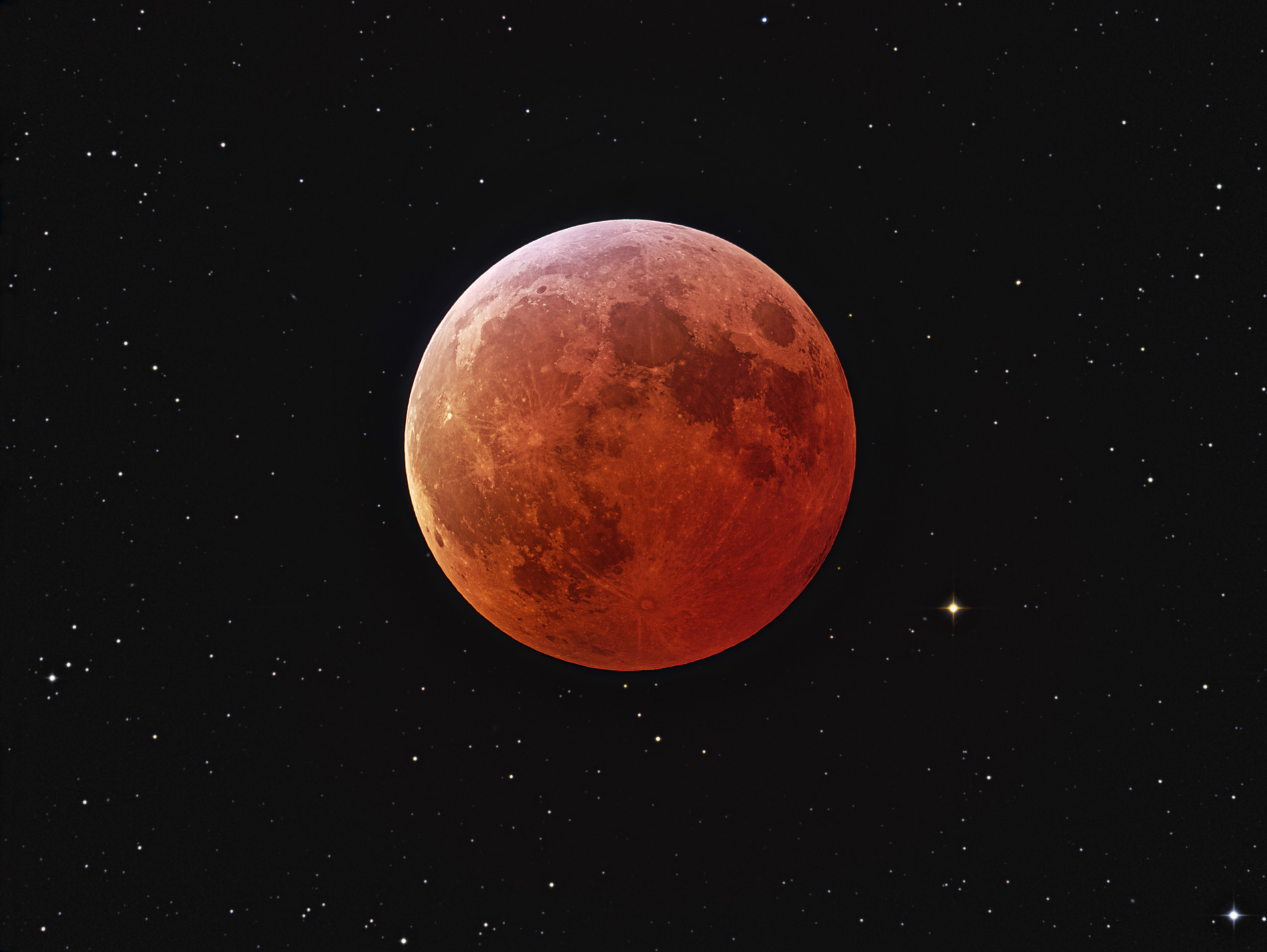
THis is an image of the moon during a total lunar eclipse. It is a collection of two exposures, one to capture the moon and one to capture the constellation leo which can be seen behind the moon. The moon, which is visible in this picture, is still being hit by sunlight although it is during a total lunar eclipse. The sunlight is reddened and refracted by the dusty atmosphere.
Thursday, March 08, 2007
Observation-friday february 23rd
Apod 3.8-Polar Ring Galaxy
 NGC2685 is a polar ring galaxy. This is a rare type of galaxy with stars, gas and dust orbiting in rings perpendicular to the plane of a galactic disk. This odd configuration could be caused by the capture of material from another galaxy by a disk galaxy, with the captured debris strung out in a rotating ring.
NGC2685 is a polar ring galaxy. This is a rare type of galaxy with stars, gas and dust orbiting in rings perpendicular to the plane of a galactic disk. This odd configuration could be caused by the capture of material from another galaxy by a disk galaxy, with the captured debris strung out in a rotating ring. Friday, March 02, 2007
Apod 3.7 X-rays and the eagle nebulae

These are X-ray images taken of m-16, the Eagle Nebulae. This image shows many regions that are very visible in the X-ray area of the spectrum of light. These images that are visible in this area of the spectrum are mostly areas where active star formation is occuring. These stars can be seen in this image as the colored spots. The fact that there are no longer that many stars visible in the pillars of dust in this picture shows us that most of the star formation that occured in this area (the eagle nebulae) finished off millions of years ago.
Tuesday, February 13, 2007
Friday, February 09, 2007
APOD 3.6-Galaxies away
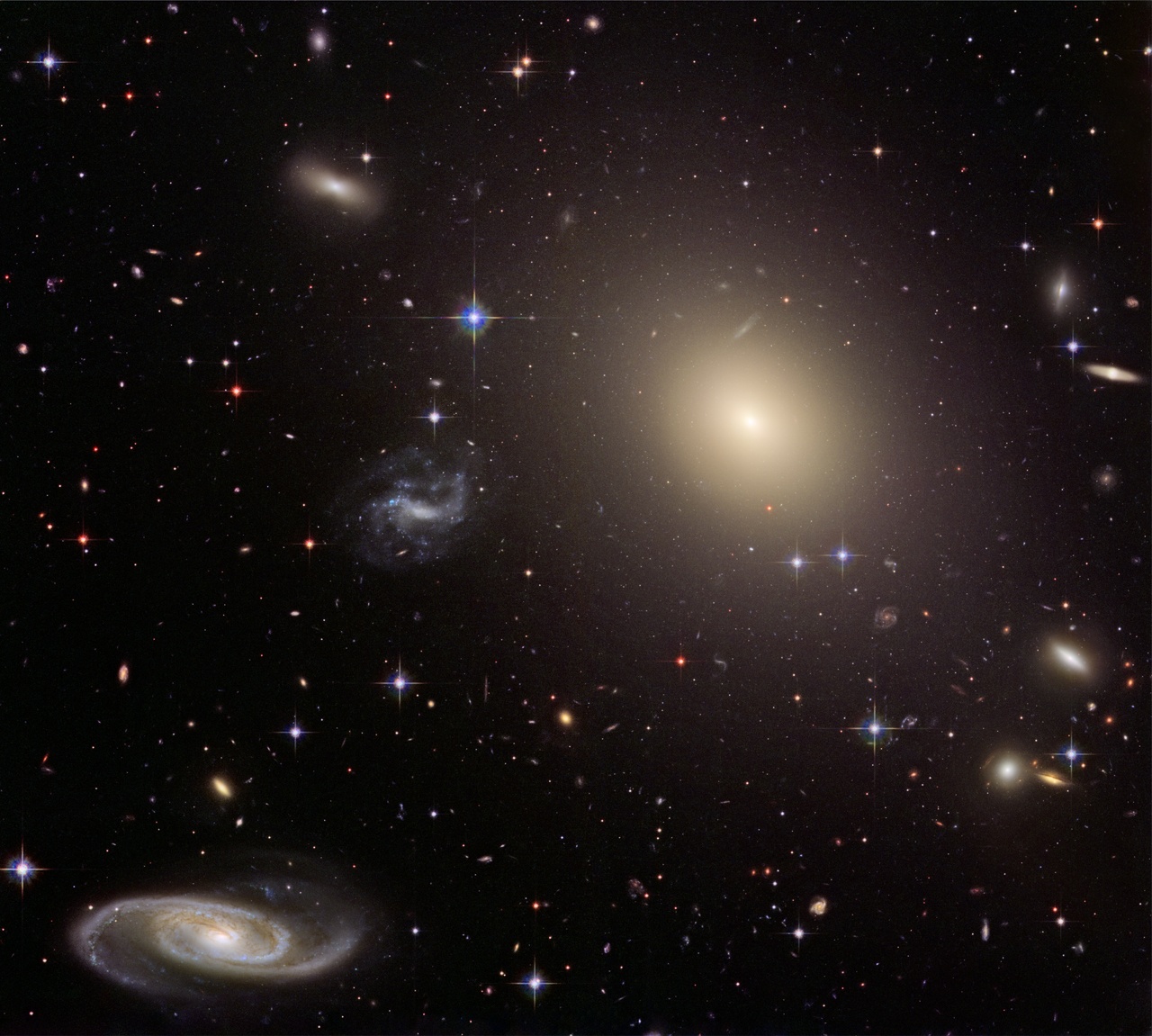 The group of galaxies pictured here are about 45o million light years away from where you are sitting right now. This is a galaxy cluster known as Abell SO740.
The group of galaxies pictured here are about 45o million light years away from where you are sitting right now. This is a galaxy cluster known as Abell SO740.This image captures numerous galaxies, the biggest being the elliptical galaxy ESO 325-G004. This giant galaxy spans over 100000 light years and has over a 100 billion stars. It is comparable in size to our own galaxy.
Friday, February 02, 2007
Apod3.5- Thor's Helmet
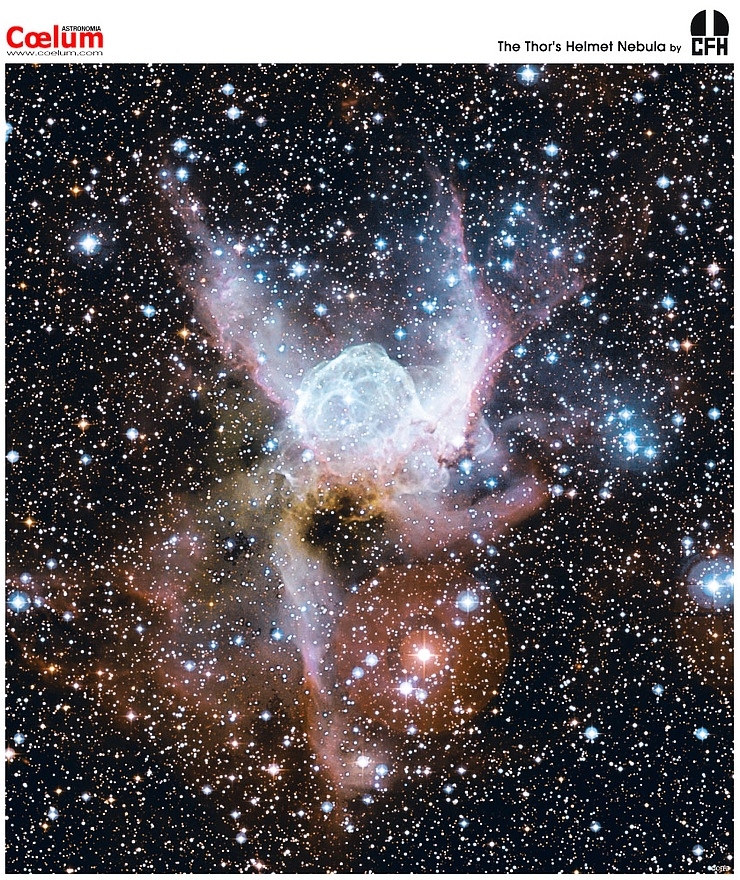
This is a picture of NGC 2359, a striking emission nebulae. It is nicknamed Thor's helmet. This bubble nebulae is 30 light years across and is blown by energetic winds from a very hot star in the center. This star is known as a Wolf-Rayet star, a rare massive blue giant which develops tremendous winds that go at millions of kilometers per hour.
Friday, January 26, 2007
Friday, January 19, 2007
apod 3.3 Fast stars near the galactic center
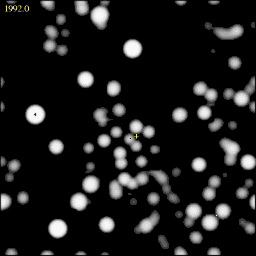 This animated gif shows how the stars in the center of our galaxy have moved over the past eight years. The yellow mark in the center of the picture marks where a peculiar radio source named sgr A. If these stars are held in the center by gravity then the object in the center must be incredibly massive.
This animated gif shows how the stars in the center of our galaxy have moved over the past eight years. The yellow mark in the center of the picture marks where a peculiar radio source named sgr A. If these stars are held in the center by gravity then the object in the center must be incredibly massive.Friday, January 12, 2007
APOD 3.2- NGC 602 and beyond

This is a picture of a satellite galaxy about 200 light years away from the small magellinic cloud visible in this picture.ridges and swept back shapes strongly suggest that energetic radiation and shock waves from NGC 602's massive young stars have eroded the dusty material and triggered a progresssio of star formation moving away from the cluster's center. It is estimated that this picture spans aobut 200 million light years.
Friday, January 05, 2007
Friday, December 08, 2006
Friday, December 01, 2006
Friday, November 17, 2006
Apod- a cat's eye nebulae
 This nebulae is over three thousand light years away. This image was taken by the hubble space telescope, and it reveals one of the most complex planetary phenomenon known to man. In fact, the features seen in the Cat's eye are so complex that astronomers suspect the bright central object may actually be a binary star system.
This nebulae is over three thousand light years away. This image was taken by the hubble space telescope, and it reveals one of the most complex planetary phenomenon known to man. In fact, the features seen in the Cat's eye are so complex that astronomers suspect the bright central object may actually be a binary star system.
Friday, November 10, 2006
APOD-Mercury Transit
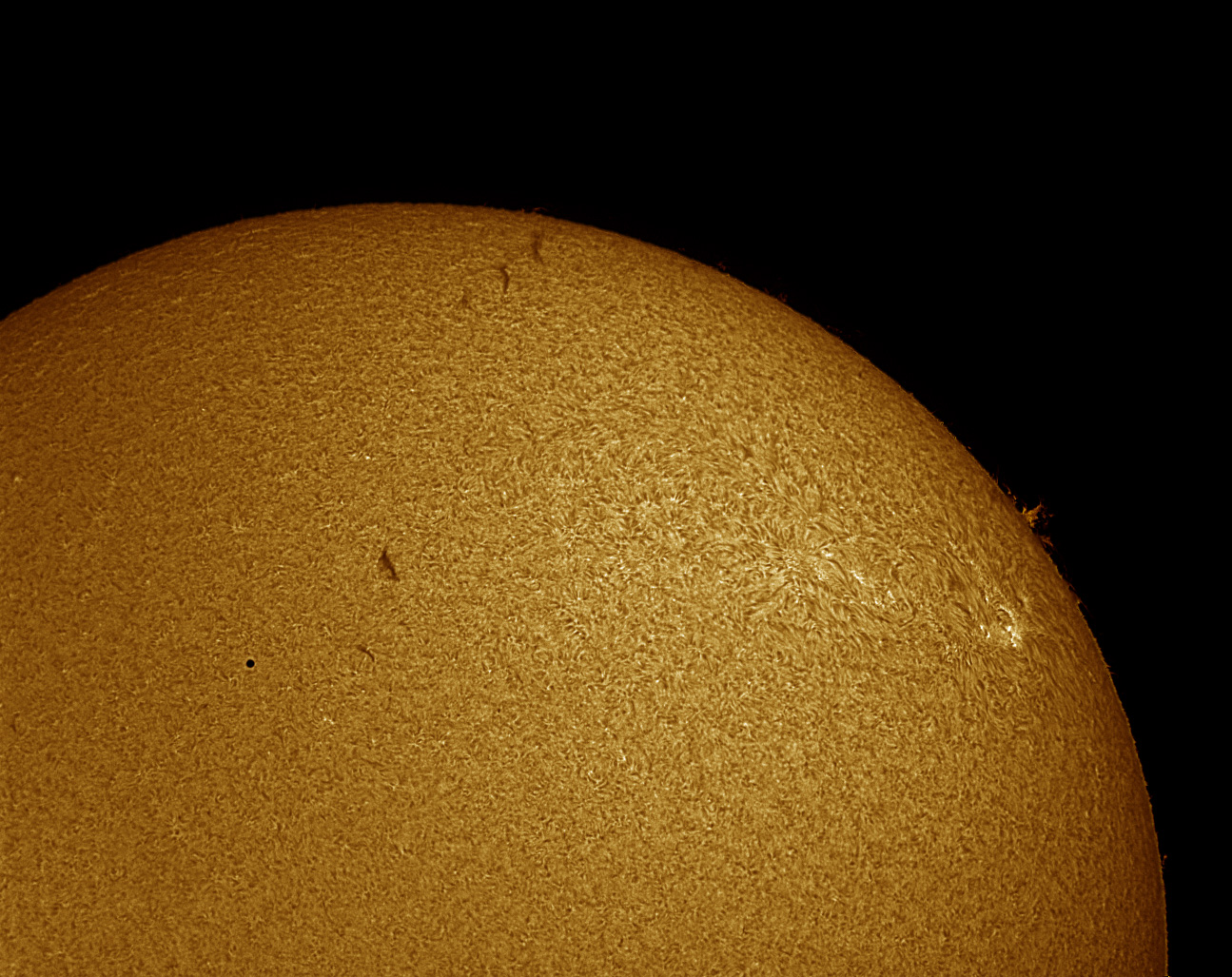 This is a picture of the transit of mercury taken by astronomer Phil Jones. The composited image was taken through a telescope equiped with an H-alpha filter that narrowly transmits only the red light from hydrogen atoms. Pictures taken this way capture a detailed picture of the solar chromosphere, the region above the Suns normally visible surface. Mercury is seen as a little black dot on the left center of this picture.
This is a picture of the transit of mercury taken by astronomer Phil Jones. The composited image was taken through a telescope equiped with an H-alpha filter that narrowly transmits only the red light from hydrogen atoms. Pictures taken this way capture a detailed picture of the solar chromosphere, the region above the Suns normally visible surface. Mercury is seen as a little black dot on the left center of this picture.
Friday, November 03, 2006
Friday, October 27, 2006
APOD-october 27th-The antennae galaxies in collision

This image is an image to two galacies colliding. Although they are colliding, they do not collide in the usual sense, that is, the stars don't come in contace with each other due to the large areas of empty space that galaxies are composed of. However, galaxies can rip each other apart gravitationally and the dust and gas in both galaxies do collide. These collisions cause the birth of literally thousands of stars, some of which are bound together as binary stars.
Monday, October 23, 2006
APOD:Friday the 20th
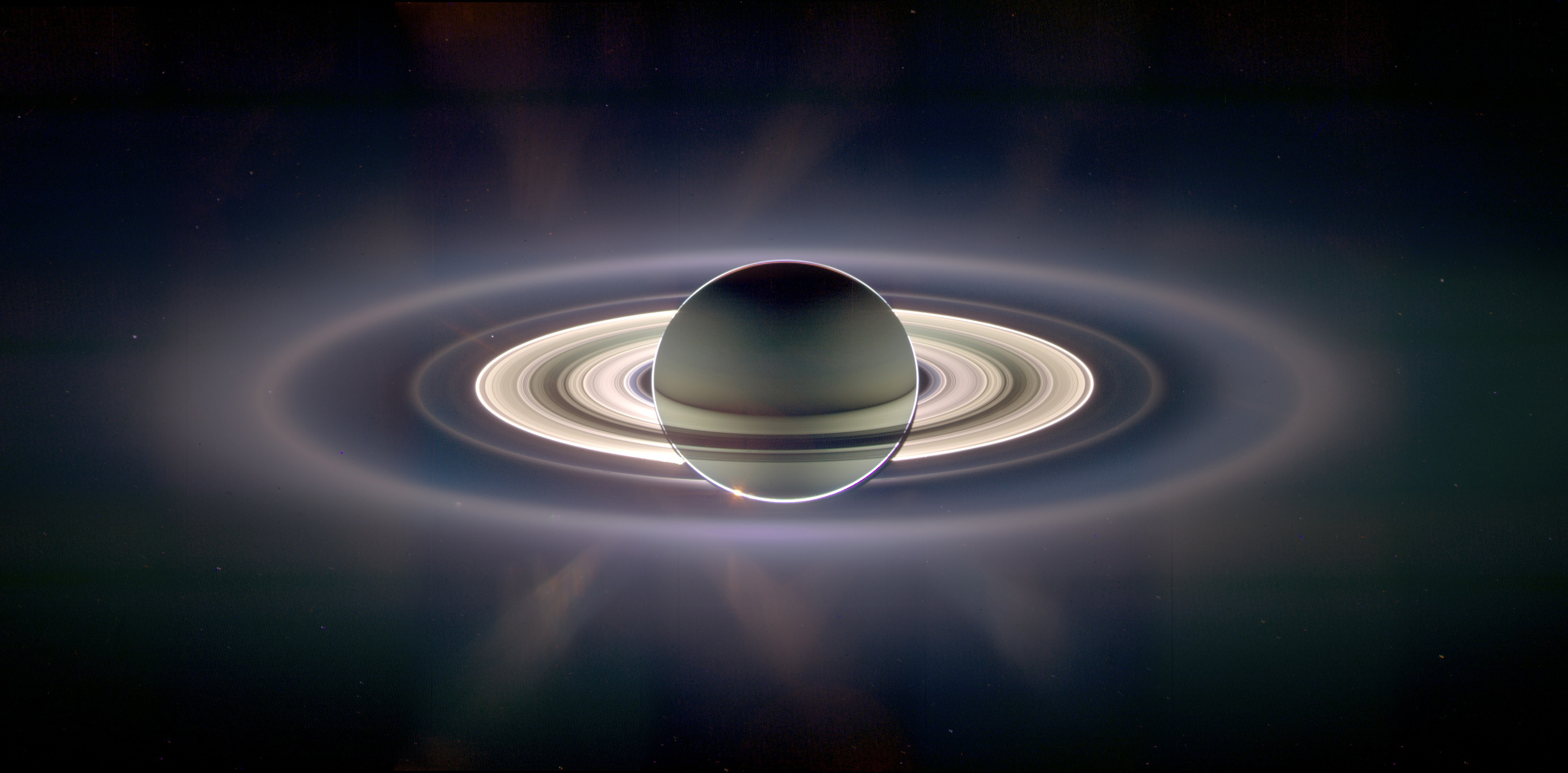
When we look at the shadow of Saturn, we are able to see many new things.. First, the night side of Saturn is seen to be partly lit by light reflected from its own ring system. Saturn's rings light up so much that new rings were discovered, although they are hard to see in the above image. Visible in spectacular detail, however, is Saturn's E ring, the ring created by the newly discovered ice-fountains of the moon Enceladus, and the outermost ring visible above.
Observations as seen on Friday, October 13th
Friday, October 06, 2006

A newly discovered comet has brightened enough to be visible this week with binoculars. The picturesque comet is already becoming a favored target for northern sky imagers. Pictured above just last week, Comet SWAN showed a bright blue-green coma and an impressive tail. Comet C/2006 M4 (SWAN) was discovered in June in public images from the Solar Wind Anisotropies (SWAN) instrument of NASA and ESA's Sun-orbiting
Friday, September 29, 2006
Tuesday, September 26, 2006
Apod:The international space station expands again!
 Once Again, The international Space Station has changed for the better(Hopefully!). The Space Shuttle Atlantis has visited it recently and came bearing new parts, including the long solar panels that are seen in this picture. You can see the new panels in the upper left corner of the space station. Also visible in this picture are numerous different modules, solar panels, a supply ship, and of course a robotic arm(without which no respectable space station would be complete).
Once Again, The international Space Station has changed for the better(Hopefully!). The Space Shuttle Atlantis has visited it recently and came bearing new parts, including the long solar panels that are seen in this picture. You can see the new panels in the upper left corner of the space station. Also visible in this picture are numerous different modules, solar panels, a supply ship, and of course a robotic arm(without which no respectable space station would be complete).
Friday, September 15, 2006
M33:Spiral Galaxy in Triangulum
 Triangulum, this small northern constellation located in the north, harbors this spiral galaxy. It is known as M33, or the pinweel galaxy as well as the triangulum. M33 is over 50,000 light-years in diameter, third largest in the local group of galaxies after the Andromeda Galaxy (M31), and our own Milky Way. This galaxy is thought to be a satellite of the andromeda galaxy. At about 1 o clock from the galaxy cener, NGC 604 is the brightest star forming region. Astronomers use the variable stars to measure distances to other places in the universe. That Rocks!
Triangulum, this small northern constellation located in the north, harbors this spiral galaxy. It is known as M33, or the pinweel galaxy as well as the triangulum. M33 is over 50,000 light-years in diameter, third largest in the local group of galaxies after the Andromeda Galaxy (M31), and our own Milky Way. This galaxy is thought to be a satellite of the andromeda galaxy. At about 1 o clock from the galaxy cener, NGC 604 is the brightest star forming region. Astronomers use the variable stars to measure distances to other places in the universe. That Rocks!
